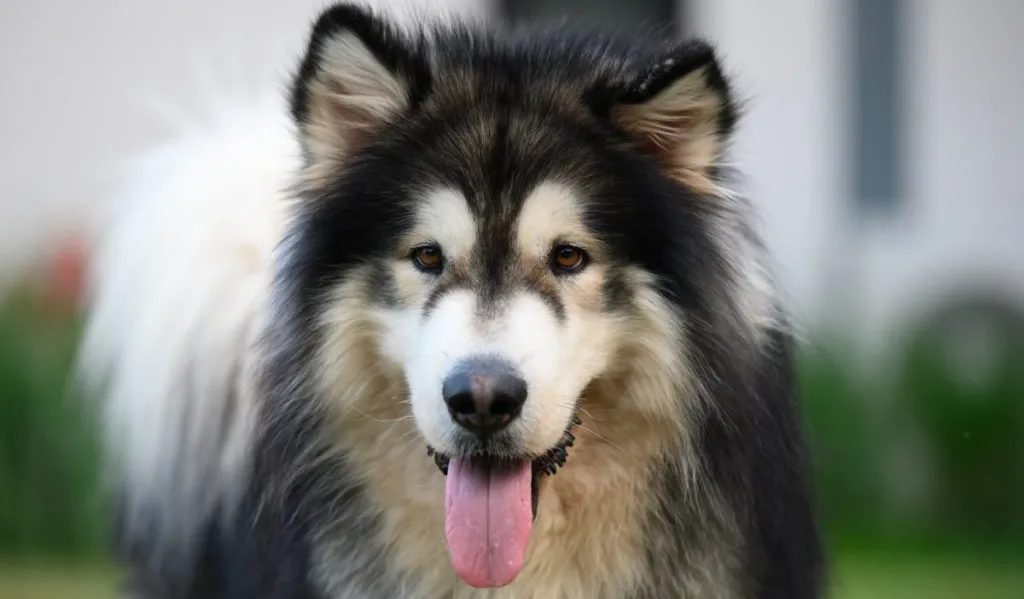Welcome, fellow dog enthusiasts, to a thrilling expedition into the world of the Alaskan Malamute! Join me as we explore the history, characteristics, care tips, and fascinating quirks of this iconic Arctic breed. Let’s embark on an adventure to uncover what makes the Alaskan Malamute a beloved companion and a legendary sled dog.
Origins and History: From Arctic Expeditions to Modern Companions
The Alaskan Malamute traces its ancestry back thousands of years to the indigenous Mahlemut people of Alaska, who developed this breed for hauling heavy loads over long distances in harsh Arctic conditions. Renowned for their strength and endurance, these dogs played a crucial role in expeditions and survival in the Arctic regions. Today, they are cherished not only for their working abilities but also for their loyal and affectionate nature as family pets.
Physical Characteristics: Built for Power and Stamina
Alaskan Malamutes are robust, large dogs with a distinctive wolf-like appearance. They typically stand 23 to 25 inches tall at the shoulder for females and 25 to 27 inches for males, weighing between 75 to 85 pounds on average. Their double coat is dense and weather-resistant, featuring a thick undercoat and a coarse outer coat that can be various shades of gray, black, sable, or red. Their erect ears, strong legs, and bushy tail all contribute to their striking appearance and efficient movement in snow.
Temperament: Gentle Giants with a Playful Spirit
Despite their formidable appearance, Alaskan Malamutes are gentle giants known for their friendly and affectionate demeanor. They are famously good-natured with children and generally get along well with other dogs when properly socialized. However, their independent nature means they may exhibit stubbornness at times, requiring patient and consistent training. Their playful spirit and love for outdoor activities make them ideal companions for active families who enjoy hiking, jogging, or even sledding.
Health Considerations: Understanding Common Issues
Like all breeds, Alaskan Malamutes are susceptible to certain health conditions. While they are generally healthy dogs, prospective owners should be aware of potential issues such as:
Hip Dysplasia
A common concern in large breeds, hip dysplasia occurs when the hip joint doesn’t develop properly, leading to discomfort and mobility issues. Regular vet check-ups and maintaining a healthy weight can help mitigate the risk.
Progressive Retinal Atrophy (PRA)
PRA is an inherited eye disorder that can lead to vision impairment and blindness over time. Regular eye exams by a veterinarian can help monitor the condition and take appropriate steps if necessary.
Hypothyroidism
Alaskan Malamutes may develop hypothyroidism, a condition where the thyroid gland doesn’t produce enough hormones. Symptoms include weight gain, lethargy, and skin issues. Treatment typically involves medication and dietary management.
Exercise and Activity Needs: Keeping Them Happy and Healthy
Alaskan Malamutes are active dogs with high exercise requirements. They thrive on regular physical activity and mental stimulation to prevent boredom and destructive behaviors. Daily walks, play sessions, and opportunities for outdoor exploration are essential to their well-being. Engaging them in activities that tap into their natural instincts, such as pulling carts or sleds, can also provide both physical and mental enrichment.
Grooming Tips: Maintaining Their Magnificent Coat
Keeping up with the grooming needs of an Alaskan Malamute is essential to their health and comfort. Their double coat sheds seasonally, with heavier shedding occurring twice a year. Regular brushing with a slicker brush or undercoat rake helps remove loose fur and prevents mats. Bathing should be done as needed using a dog-specific shampoo to preserve the natural oils in their coat. Additionally, routine care for their ears, teeth, and nails is important to maintain overall hygiene.
Feeding Your Alaskan Malamute: Nutrition for Strength and Vitality
Choosing the right diet is crucial for the health and longevity of your Alaskan Malamute. A high-quality dog food formulated for large breeds is recommended, taking into account their age, activity level, and any specific health concerns. Portion control is important to prevent obesity, which can exacerbate joint problems. Consultation with a veterinarian can help tailor a feeding plan that meets your Malamute’s nutritional needs.
Training and Socialization: Harnessing Their Intelligence
Training an Alaskan Malamute requires patience, consistency, and positive reinforcement techniques. They are intelligent dogs but can be independent and strong-willed, so early socialization and obedience training are crucial. Positive interactions with other dogs and exposure to various environments from a young age help them develop into well-adjusted adults. Establishing clear boundaries and routines builds trust and strengthens the bond between you and your Malamute.
Famous Alaskan Malamutes: From Screen Stars to Real-Life Heroes
Throughout history and in popular culture, Alaskan Malamutes have left an indelible mark with their strength, loyalty, and beauty. From serving alongside explorers in the Arctic to starring in films and TV shows, these dogs have captivated audiences worldwide. Notable Malamutes like Buck from Jack London’s “The Call of the Wild” and real-life sled dogs in the Iditarod race showcase their enduring spirit and endurance.
Choosing Your Alaskan Malamute: Adoption and Responsible Ownership
If you’re considering adding an Alaskan Malamute to your family, adoption from a rescue organization or reputable breeder is recommended. Responsible breeders prioritize health, temperament, and breed standards, conducting health screenings and providing proper care for their dogs. Avoid purchasing from puppy mills or backyard breeders, as they may not prioritize the well-being of the animals.
Conclusion: Embracing Life with an Alaskan Malamute
In conclusion, the Alaskan Malamute is not just a dog; it’s a companion with a rich history and a heart as big as its size. Whether you’re drawn to their strength, their gentle nature, or their impressive endurance, owning a Malamute is a commitment to providing love, care, and adventure. With proper training, nutrition, and attention to their health needs, you’ll enjoy a fulfilling journey with your majestic Arctic companion.
- Best Clay Alternatives for 2025 - April 19, 2025
- Best Seamless.ai Alternatives for 2025 - April 19, 2025
- Best UpLead Alternatives for 2025 - April 18, 2025



